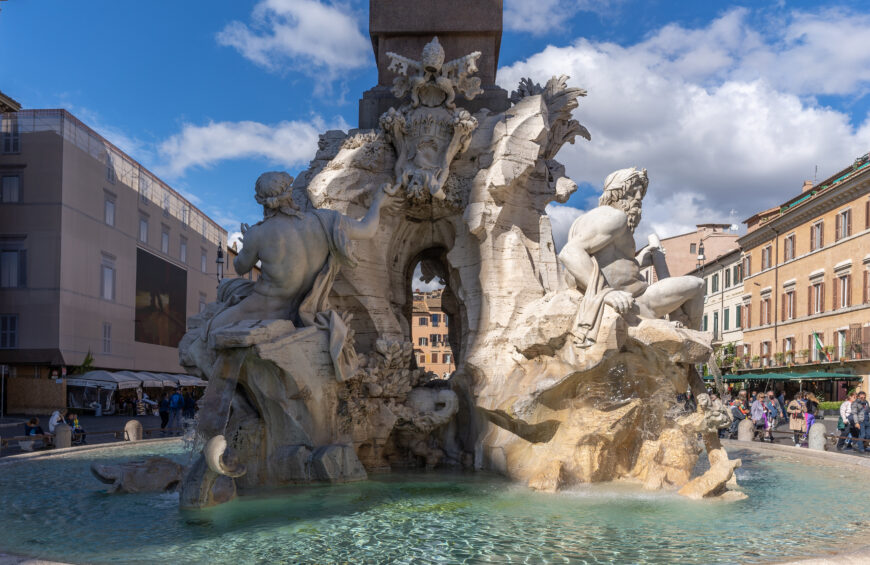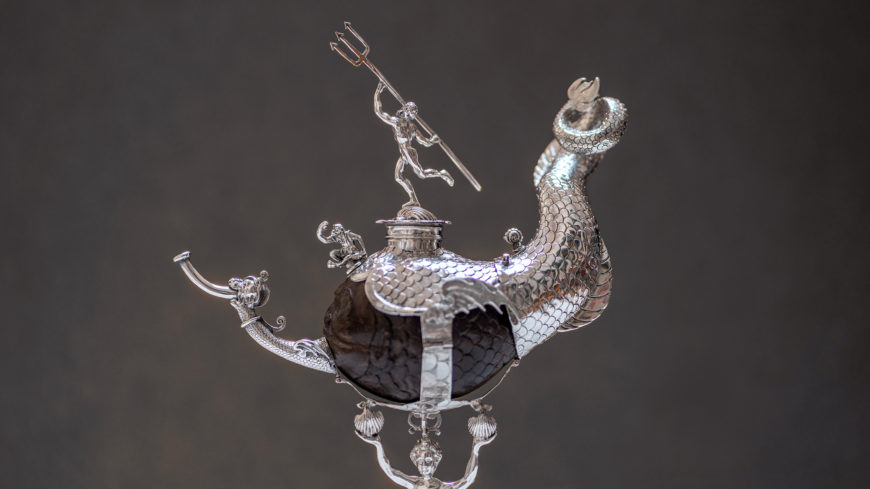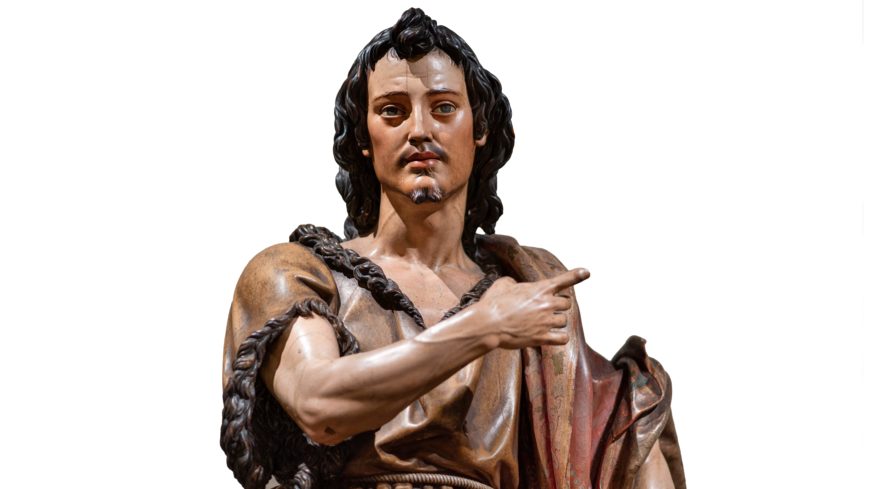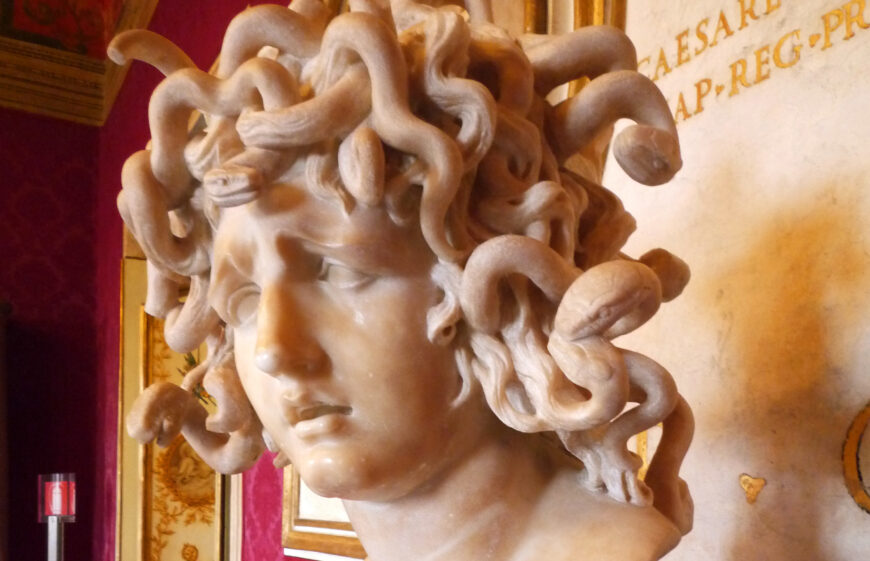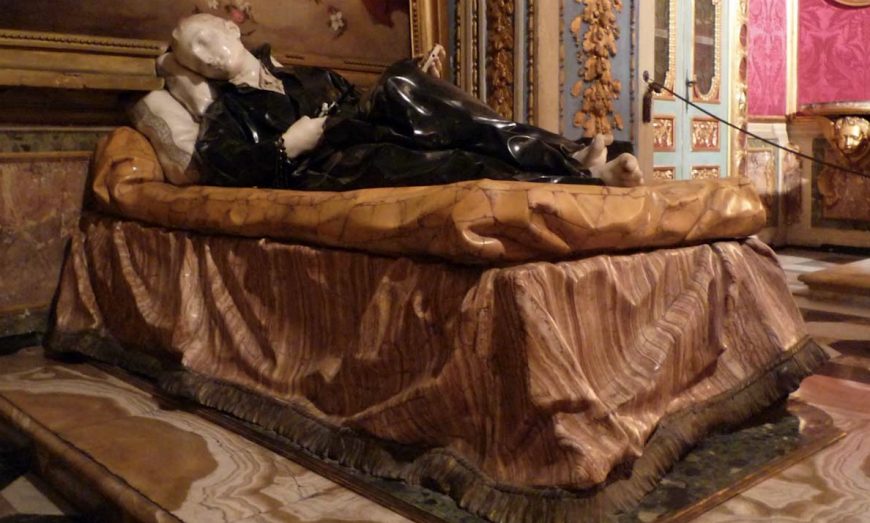Gian Lorenzo Bernini, Pluto and Proserpina (or The Rape of Proserpina), 1621–22, marble (Galleria Borghese, Rome)
Proserpina is the Latin variant of the mythic Greek Persephone.
[0:00] [music]
Dr. Steven Zucker: [0:05] We’re in the Galleria Borghesi in Rome, looking at an important, very early sculpture by Bernini.
Dr. Beth Harris: [0:12] This is “Pluto and Persephone.” This is a bit of a difficult subject. Pluto, who rules over Hades, the land of the dead, is shown here abducting the beautiful Persephone.
Dr. Zucker: [0:23] She’s the daughter of Zeus and Demeter. Demeter is associated with life, with the growth of the fields, with nature.
Dr. Harris: [0:29] With crops, with fertility.
Dr. Zucker: [0:31] She’s devastated by the loss of her daughter.
Dr. Harris: [0:34] A deal is struck. Persephone only spends half the year in the underworld and the other half of the year here on Earth.
Dr. Zucker: [0:42] A fanciful explanation for why crops grow only in the warm months. Although the sculptural group is now in the middle of a room, the sculpture is originally placed very close to a wall and is really meant to be seen from the front.
Dr. Harris: [0:54] I find this to be a difficult sculpture when I first look at it because my eye goes immediately to Pluto, and the grin on his face as he’s abducting Persephone feels very distasteful.
Dr. Zucker: [1:06] Especially in contrast to Persephone, who is rendered so beautifully, and she looks as if she is truly repulsed by him. She doesn’t want to touch him.
Dr. Harris: [1:15] She’s using her left hand to push his forehead away, but she curls her fingers away. She doesn’t want to lay her entire hand on his body. Even her toes seem tensed up as she tries to resist him.
Dr. Zucker: [1:28] But probably the most striking aspect of the sculpture for me is the way Pluto’s fingers press into her thigh, and the artist demonstrates the elasticity of flesh but in hard, cold stone. This is marble. This is magic.
Dr. Harris: [1:42] This is what Bernini could do best. He could make marble appear to be flesh, or feathers, or hair, or the bark of a tree. He could transform marble into almost any material.
Dr. Zucker: [1:54] This sculpture began as a block, and the artist chisels and drills to remove the unnecessary stone. But this sculpture is so delicate, it almost seems as if it’s made the way a bronze sculpture is made, that is, it was built up in clay or wax, so delicate and so fine are the details.
Dr. Harris: [2:11] That’s especially true with her hair that flies back. It is as though he’s modeled that in some soft material.
Dr. Zucker: [2:18] Or the cloth that, almost like a corkscrew, spins behind her.
Dr. Harris: [2:21] Here we are in the 1600s. This is the Baroque era. The movement that we see here, this caught moment in time, is part of what makes this Baroque in style.
Dr. Zucker: [2:33] It would be impossible for these figures to hold their position for more than one moment in time. Look at Pluto. Both of his legs are flexed. Those knees are bent. His body is so unstable. He must be in motion. He must be moving forward. This lacks all of the stability of the High Renaissance.
Dr. Harris: [2:46] The composition seems to be in the shape of an X, of two intersecting diagonal lines. As soon as you have a diagonal, you have a sense of movement and instability.
Dr. Zucker: [2:56] The idea of movement is even expressed in the dog that guards Hades, Cerberus, whose three heads almost seem as if they might be one head in motion. I love the fact that Bernini has sculpted the eye of one of the dog heads as a spiral.
Dr. Harris: [3:10] Speaking of instability, Pluto’s weight is really carried just on that forward foot, on his left foot, and the right foot is up, and he’s just on the ball of his foot and three of his toes. This is incredibly unstable.
Dr. Zucker: [3:22] He seems to be in the process of hoisting her up.
Dr. Harris: [3:25] And she’s in the process of pushing him away. We have conflicting desires here. This is not a movement in unison. This is a conflict.
Dr. Zucker: [3:33] This is also an exercise in the beauty of the human body, in the beauty of form. Bernini was a deeply religious man in a deeply religious culture, but this is not in any way a religious drama. This is mythology. This is speaking to the cultured status of the man who commissioned this.
Dr. Harris: [3:49] And the continued importance of ancient Greek and Roman culture, even here in the Baroque era.
[3:54] [music]


